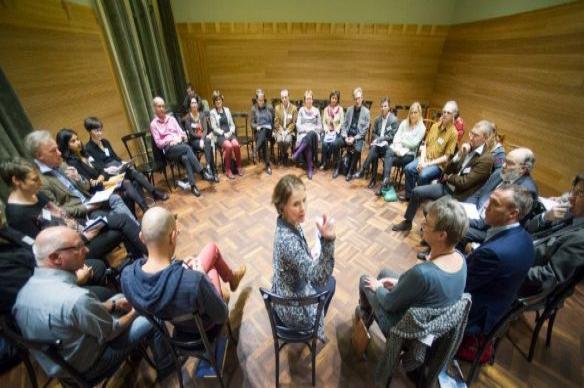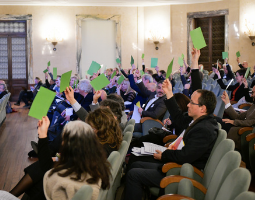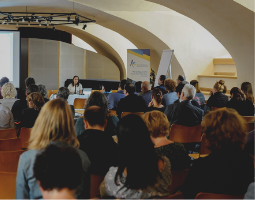In the last newsletter, we have presented our cooperating with partner organisations, which is not only getting increasingly important to AEC, but it is also taking up more prominence in AEC's advocacy activities.
Of course, we have already experience in bundling forces and to express concrete demands in coordinated action – in particular when it comes to representing common interests and to speaking to the outside world with one voice. However, this might sound easier than it could turn to be. Before being able to go for joint action, there are a few questions to answer:
Of course, we have already experience in bundling forces and to express concrete demands in coordinated action – in particular when it comes to representing common interests and to speaking to the outside world with one voice. However, this might sound easier than it could turn to be. Before being able to go for joint action, there are a few questions to answer:
- With which partners do we actually share interests?
- And in which areas do we find such common interests that are worth fighting for in joint action?
AEC is a player in more than one area in question: in the field of music, but also in the field of higher education. Both areas are embedded in a larger context. Music is part of the world of art and culture, and higher education is in the broader field of education. Especially in the peripheral areas, it is not always easy to agree on common demands and language regulations. However, past experience also shows how difficult it is to impose political and strategic goals if this is not done jointly.
Hereby, we want to update you on three initiatives that might serve as examples of good practice in cooperation among partner organisations in order to achieve common goals.
Hereby, we want to update you on three initiatives that might serve as examples of good practice in cooperation among partner organisations in order to achieve common goals.
- On 17 June, the representatives of the most important associations and organisations active in the field of arts and culture at a transnational level, met at the invitation of Culture Action Europe in BOZAR, Brussels. The aim of the meeting was to coordinate the topics, priorities and actions towards the newly elected European Parliament, in the run-up to the composition of the different parliamentary committees that are important for the sector (- such as the CULT committee). The mere fact that there was an opportunity to find common ground helps to make the voice of culture better heard among MEPs.
- It is crucial to the success of the AEC's political work to not only be perceived as an actor in the field of arts and culture, but also as an influential actor in higher education and education in general. AEC's success is not only due to the close and friendly contacts maintained by the AEC with the European University Association (EUA), but also with other university associations, such as the European University Foundation (EUF). Most recently, EUA and AEC have come together to develop, test and critically reflect new models of learning and teaching that promote cooperative and student-centered learning and teaching. In addition, research and doctoral studies are topics that we try to tackle together. EUF, on the other hand, is a proven partner when it comes to tackling the challenge of the digital shift.
- Thanks to an initiative of AEC that all the important players who deal with Artistic Research at European level will for the first time all meet together at the end of August. Artistic Research is still a young field of research, and it is still hard for many policymakers to understand it. Furthermore, the development of this field of research and its recognition by the respective national legislations and frameworks is taking place at different speeds. Apart from AEC, ELIA, Cilect and Cumulus, the associations that represent the interests of the Higher Art Education Institutions on an international level, representatives of accreditation bodies, and specialised research institutions will also be present at the meeting in Vienna. In addition, it is very important to us to look beyond the scope of Artistic Research taking place at Higher Arts Education Institutions. This is what our cooperation with the Society of Artistic Research (SAR) and Culture Action Europe (CAE) stands for. The aim of the meeting is to agree on the cornerstones of a common political strategy in order to be able to represent the field of Artistic Research to political decision-makers and funding bodies with one voice. It must be emphasized that it is not the goal of this meeting to streamline the understanding of what Artistic Research is. Like many other research fields, Artistic Research lives from diversity and a dynamic openness towards a continuous change.






